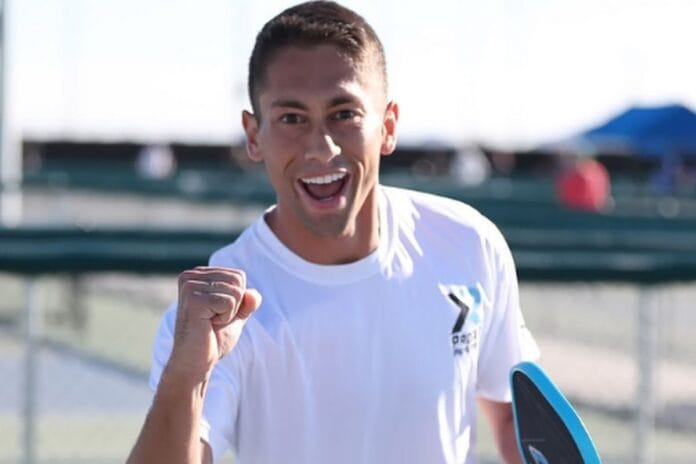Decoding Topspin With Zane Navratil: In a recent episode of the Briones Pickleball Podcast, Zane Navratil delved into the strategic nuances of pickleball, shedding light on the ongoing debate between slicing and topspin. According to Navratil, the choice between these two techniques depends heavily on a player’s skill level and the evolving nature of the game.
Slicing vs. Topspin: Decoding the Strategy
Slicing: For players at the 3.0 to 4.0 levels, slicing remains a favored tactic. At these stages, opponents often find it challenging to adapt to the backspin of a well-executed slice. This unpredictability can lead to more effective returns and fewer mistakes. Slicing offers a controlled approach that can disrupt the rhythm of less experienced players, giving them a strategic edge.
Topspin: As players advance to higher levels, particularly 4.5 and above, the game transforms. Opponents become adept at reading and countering spins, making topspin a more advantageous technique. Navratil emphasizes that topspin shots, with their aggressive penetration and ability to force opponents into defensive positions, become crucial. While slicing remains useful, its effectiveness wanes as players become more skilled at handling and exploiting different spins.
The Evolution of Topspin in Pickleball
Navratil’s discussion also highlighted the evolution of topspin in pickleball.
Early Use: In the early days, topspin was largely reserved for serves and aggressive drives. The focus was on generating power and speed, with limited emphasis on its broader applications.
Current Trends: Today, topspin is a key component in a wide array of shots, including dinks, drops, and volleys. Its role has expanded to control the ball’s trajectory, enhancing its depth, and applying pressure on opponents. This shift reflects a broader trend towards a more dynamic and aggressive style of play.
Future Directions: Looking ahead, Navratil predicts that topspin will continue to evolve and dominate the sport. Players are likely to develop increasingly inventive ways to incorporate topspin into their strategies, pushing the boundaries of what’s possible on the court.
The Future of Pickleball
As pickleball grows in popularity and complexity, Navratil anticipates further advancements in technique and strategy. The serve is becoming a more potent weapon, and returns are evolving into more aggressive plays. There is a growing trend towards using powerful, flat returns rather than merely focusing on placement, which reflects a shift towards faster-paced and more aggressive gameplay.
The evolution of the topspin and the slicing debate highlights the dynamic nature of pickleball. As players adapt and refine their pickleball techniques, the game continues to evolve, offering new challenges and opportunities. Mastery of these techniques not only provides a strategic advantage but also contributes to the ever-expanding landscape of pickleball.

News in Brief: Decoding Topspin With Zane Navratil
In a recent Briones Pickleball Podcast, Zane Navratil discussed the strategic nuances of slicing versus topspin. For players at levels 3.0 to 4.0, slicing is effective due to its unpredictability and the difficulty opponents have in adapting to backspin. However, as players advance to 4.5 and above, topspin becomes more advantageous. Navratil notes that Topspin’s aggressive penetration and ability to force defensive positions make it crucial at higher levels. Originally used mainly for serves and drives, topspin now features prominently in dinks, drops, and volleys. Navratil predicts that Topspin will continue to evolve, driving the game towards more dynamic and aggressive play. The debate highlights pickleball’s evolving strategic landscape and growing complexity.
Also Read: Novak Djokovic Expresses Concerns Over Pickleball Impacting Tennis

